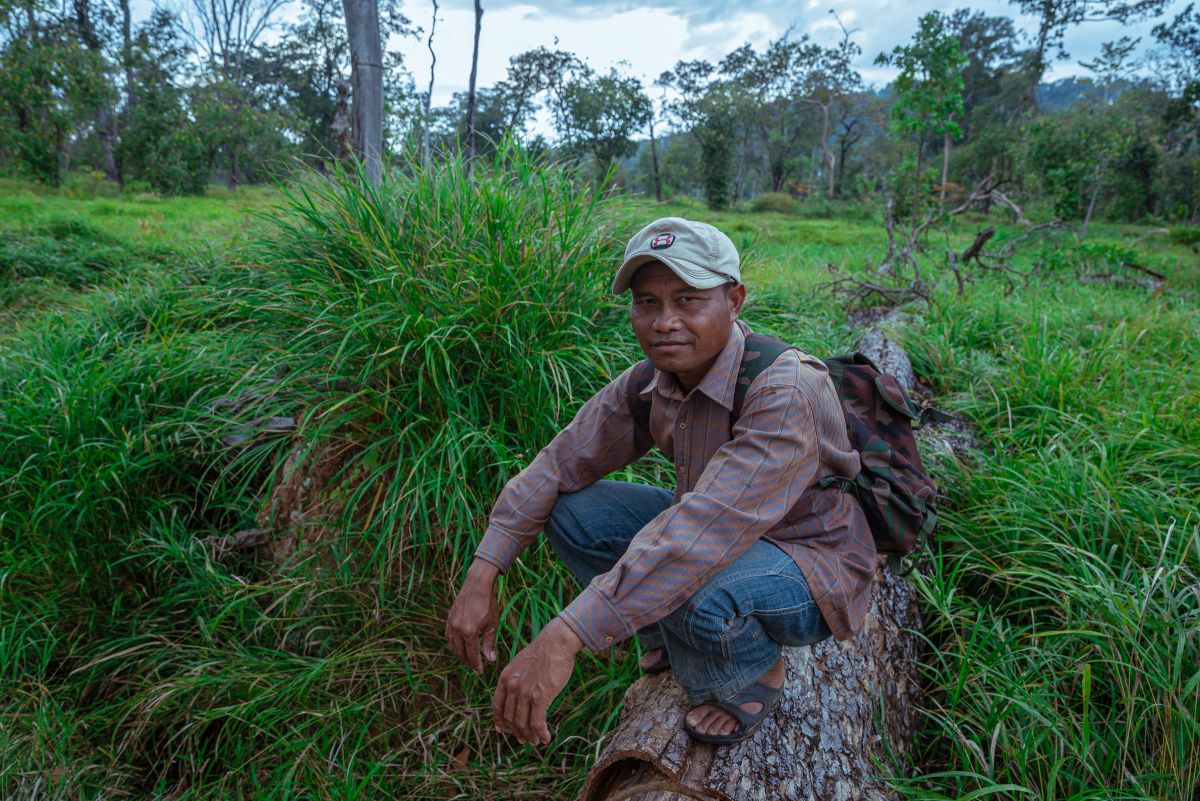

In a forest bordering Cambodia’s Beng Per Wildlife Sanctuary, local leader Khea Sokchea points to a sign on a tree at the entrance to his community’s ecotourism site. “Killing me in the name of development,” it reads. “How will you live without me?”
The sign offers a stark warning to the country. More than 80 percent of Cambodians live in rural areas and rely on the country’s forests and other natural resources. But these communities typically are left out of the country’s political and economic discussions. As a result, many of them and the forests on which they depend are suffering.
Not all communities are waiting for the system to change. As this Special Report illustrates, communities like Khea’s are now bucking that trend as pioneers of community-based forest management. This approach provides communities with formal rights to protect their forests and improve their livelihoods through access to non-timber forest products and, in principle, timber.
Forests have been central to the cultural, economic and political histories of Cambodia. In the thirteenth century, Chinese envoy Zhou Daguan noted that rare wood was the Khmer Empire’s most precious trading commodity. Hundreds of years later, French colonizers prized Cambodia’s timber and extracted large amounts of it. Somewhat more recently, the country’s timber financed war before becoming a mainstay of post-conflict development. Although the timber trade has brought in billions of dollars, communities like Khea’s have seen few of the benefits.
Khea lives in Chombok Hos Village in Preah Vihear Province. Back in 2008, the village was surrounded by economic land concessions, a development model initiated by the Government in the early 2000s. The military and individuals involved with the concession system largely profited and controlled much of the land. “It was a ‘war zone’,” says Khea. “Companies would hire the military to patrol the area so no one could take or use the land.”

Much of the forest near Khea's village disappeared, including in two protected areas: the Prey Lang and Beng Per wildlife sanctuaries. According to Global Forest Watch, the district lost 27,600 hectares of tree cover from 2011 to 2014. The community saw plantations and military facilities replace their customary lands.
The villagers suspected that without support from the Government, the forests would continue to disappear. So Khea and others, with assistance from the World Vision charity, applied for formal community forest status. In 2016, the Government approved their request.
Explore tree cover loss from 2001 to 2020 in Rovieng District, the location of Chombok Hos Village with Global Forest Watch interactive map. Click here.
In Cambodia, communities like Khea’s have managed local forests through customary practices for millennia. But as a government policy, community-led forest management has been around for less than three decades.
Two forms exist: community forests on land administered by the Ministry of Agriculture, Forestry and Fisheries, and community-protected areas on land administered by the Ministry of Environment. Policy-makers, non-government organizations and communities believe these are viable alternatives to the rampant development that has enriched the country’s elites and devastated its forests.
Khea has seen this virtue firsthand. He says the military departed and forest cover began to grow “once the land was identified, protected and claimed as a community area”. His community can now gather greater quantities of forest resources, such as resin, bamboo, honey and vegetables. They believe the ecotourism site they have developed will save the area’s forests.
“When tourists visit regularly, the forest can be protected through the income generated,” Khea says. “When I imagine this, it makes me appreciate what I have done.”
In a country whose forests and natural resources have largely benefited elites, community-led forestry has generated hope of a chance to reverse decades of unequal development. The future, Khea trusts, is now in his community’s hands. But across Cambodia, fundamental challenges persist. They include poor implementation of relevant laws, the poor quality of forest land allocated to communities and unequal access to opportunities to benefit.
RECOFTC has produced this Special Report to amplify the voices of those people taking on these and other challenges. The report provides a foundational understanding of the development of different models of community forestry in Cambodia through the voices of those making tangible change: communities, organizations, government officials and others. We hope this offers clarity on how to bridge policy and practice in the near future and ensure that community forestry meets its potential.
